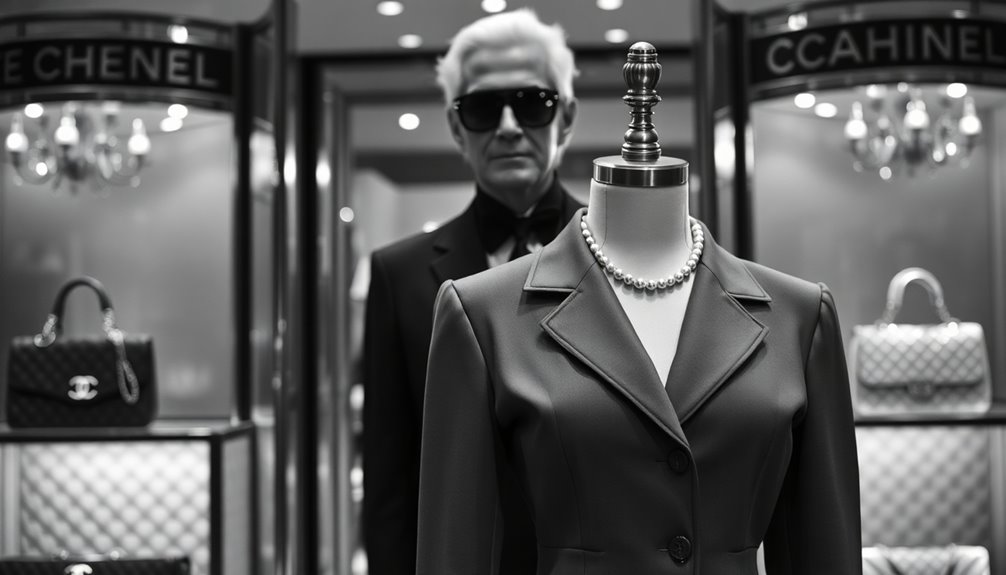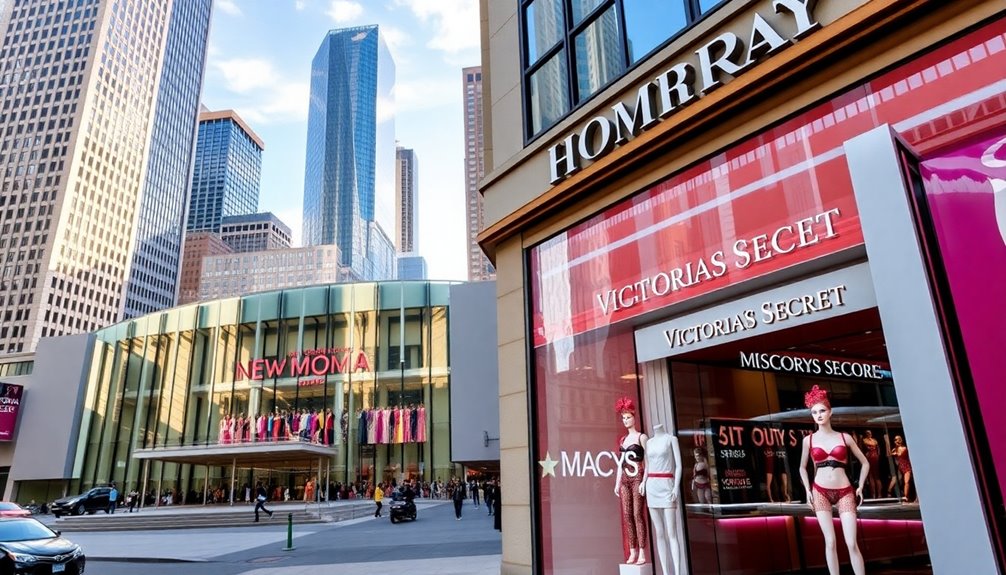You'll discover that the history of Maison Chanel is a fascinating journey from Coco Chanel's innovative spirit to Karl Lagerfeld's modern interpretations. Born in 1883, Coco broke fashion norms by introducing effortless elegance, like the iconic Chanel No. 5. She expanded her empire with ready-to-wear collections and haute couture, leaving a lasting impact on Hollywood. Karl joined in 1983, transforming Chanel into a global powerhouse through bold designs and inclusivity. Today, the brand, under Virginie Viard, remains a fusion of elegance and innovation. If you want to uncover more about this iconic house, keep exploring its rich history and influence.
Key Takeaways
- Gabrielle "Coco" Chanel revolutionized women's fashion by introducing relaxed silhouettes and liberating designs that emphasized comfort and elegance.
- The launch of Chanel No. 5 in 1921 established the brand as a leader in luxury fragrances, becoming a global sensation.
- Karl Lagerfeld revitalized Chanel in 1983 by merging modern trends with classic designs, transforming the brand into a $10 billion powerhouse.
- Chanel's expansion included haute couture, jewelry, and ready-to-wear collections, maintaining a commitment to artisan techniques and timeless elegance.
- The brand's cultural impact continues to inspire fashion, promoting accessible luxury and challenging restrictive fashion norms for women.
Early Foundations of Chanel

The early foundations of Chanel are rooted in Gabrielle Bonheur Chanel's challenging upbringing. Born on August 19, 1883, in Saumur, France, Gabrielle faced adversity early on. After her mother passed away when she was just six, her father abandoned her and her siblings. At age 12, she found herself in an orphanage, where nuns taught her the essential skill of sewing, a talent that would shape her future. This early exposure to sewing would later influence her designs and the founding of her fashion empire.
After leaving the orphanage, Gabrielle attended a boarding school in Moulins for two years. At 18, she worked as a clerk at "Au Sans Pareil" hosiery, but her passion for singing led her to perform in a café, earning her the nickname "Coco." This nickname, possibly linked to a song or the term "cocotte," opened doors for her, allowing her to meet influential men.
One such man was Etienne Balsan, a wealthy playboy who provided the financial support she needed to start her millinery business. Gabrielle's relationships with wealthy men, particularly Balsan and later Arthur "Boy" Capel, were pivotal in her early fashion endeavors, allowing her to lay the groundwork for what would become the iconic Chanel brand.
Expansion and Innovation Era
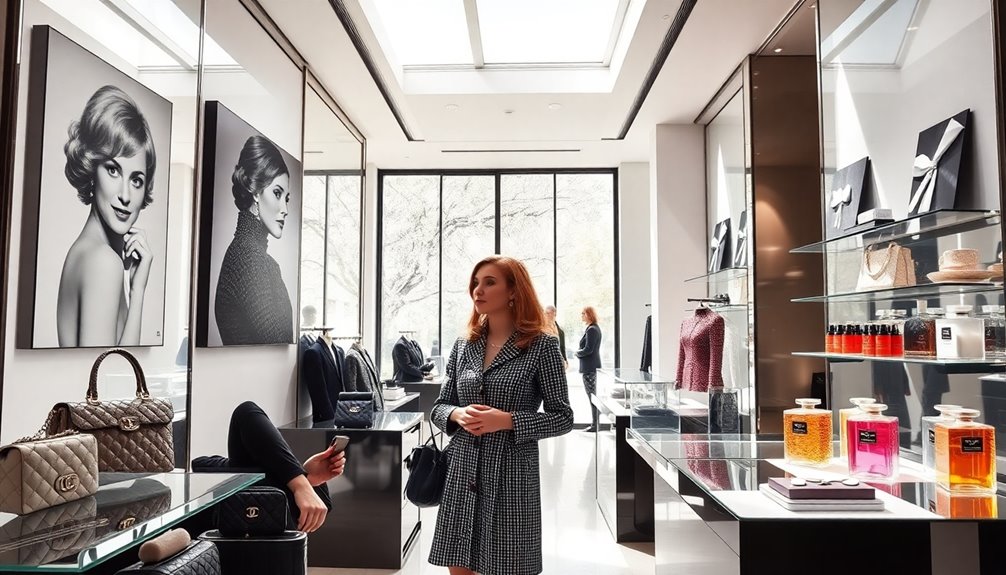
During the early 20th century, Chanel rapidly expanded its influence in the fashion world, marking a significant era of innovation.
In 1913, you'd find Chanel's second boutique in Deauville, launching a ready-to-wear line tailored for active women. By 1915, her Biarritz store specialized in haute couture, employing over 300 people and solidifying her status as a leading designer. Coco Chanel also pioneered the mixing of women's and men's wear, introducing pants in women's fashion.
The 1920s saw further diversification, with the 1921 launch of Chanel No. 5, a perfume that became a global sensation.
By 1932, she introduced a jewelry line focused on diamonds, and in 1955, the iconic Chanel 2.55 bag debuted, featuring quilted leather and a stylish chain-link strap.
When Karl Lagerfeld took over as chief designer in 1983, he revitalized the brand by merging modern trends with Chanel's rich heritage.
His reintroduction of the Classic Flap bag in 1984 quickly became a favorite.
Throughout the 1990s, Lagerfeld's collections incorporated contemporary styles, appealing to a younger audience and solidifying Chanel's relevance in the modern fashion landscape.
Hollywood's Influence on Chanel
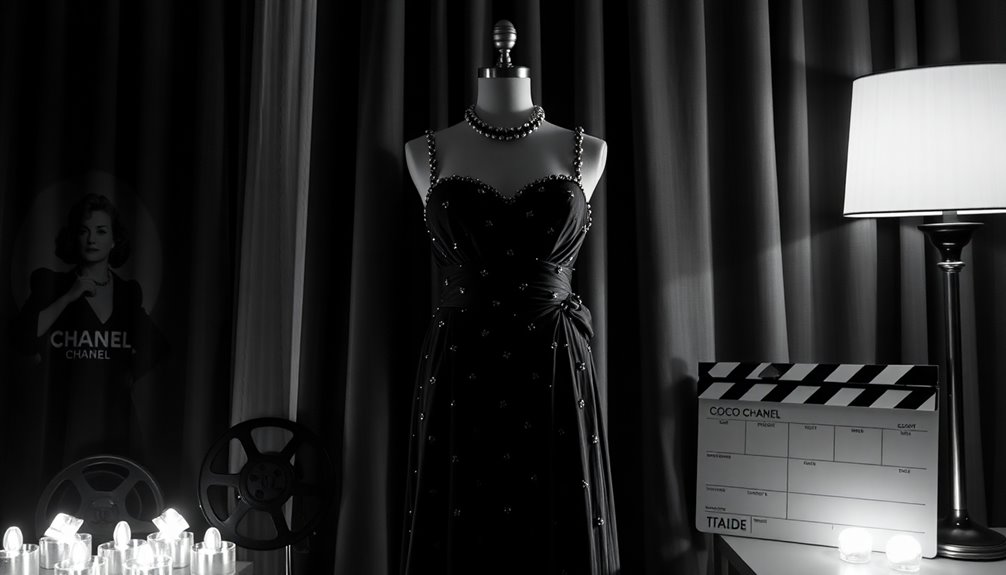
Chanel's work not only kept American women updated with Parisian fashion but also contributed to her legacy as a fashion icon. Her involvement in Hollywood marked a significant shift in the relationship between high fashion and the film industry, showcasing how designers could influence cinematic aesthetics. Her influence remains evident today, as Chanel designs continue to grace Hollywood red carpets and inspire future fashion collections.
The Karl Lagerfeld Transformation
Coco Chanel set the stage for luxury fashion, but it was Karl Lagerfeld who redefined the brand for a new generation. When he joined Chanel as creative director in 1983, the brand was on the brink of irrelevance.
Lagerfeld transformed its image, making it more accessible and inclusive while staying true to its heritage. He introduced ready-to-wear collections, effectively expanding into new markets and appealing to a broader audience.
Lagerfeld reinterpreted iconic designs, like the 2.55 Flap Bag, adding modern features like a leather woven chain and the Double C turn-lock closure. He shifted the Chanel silhouette to reflect the bold styles of the 1980s, with padded shoulders and shorter skirts.
By incorporating menswear elements, he blurred gender lines in fashion. His commercial success grew Chanel into a $10 billion global powerhouse, ensuring the survival of artisan techniques by acquiring specialist workshops.
The interlocking CC logo became a hallmark of luxury, appearing on everything from bags to jewelry. Lagerfeld's innovative approach not only revitalized Haute Couture but also cemented Chanel's status as an influential fashion house, ensuring that Chanel remained the epitome of luxury throughout his tenure.
Contemporary Legacy of Chanel
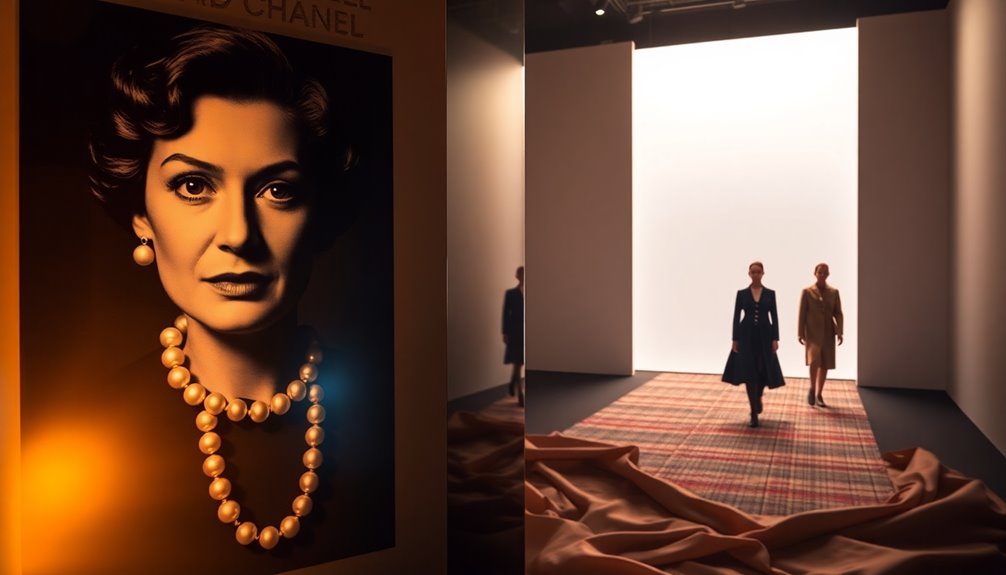
The legacy of Chanel continues to thrive, blending timeless elegance with modern innovation. Under Virginie Viard's leadership, the brand innovates across fashion sectors, introducing new collections that marry traditional elements with contemporary designs. You'll find Chanel expanding into haute jewelry and luxury timepieces, showcasing a commitment to sophistication. Additionally, the brand's dedication to sustainable lifestyle practices reflects a broader trend among celebrities, further enhancing its contemporary appeal.
Chanel's philosophy empowers women through fashion, emphasizing comfort without sacrificing elegance. Their use of soft, luxurious fabrics like jersey creates feminine and sensual garments tailored for the modern woman. By promoting simplicity and timeless beauty, the brand embraces individuality while meeting your desire for style. Coco Chanel's introduction of the Little Black Dress revolutionized women's fashion and remains a staple in wardrobes worldwide.
Globally recognized, Chanel remains a luxury powerhouse, with iconic products like Chanel No. 5 and the 2.55 handbag maintaining their status as best-sellers. The Wertheimer family's support ensures the brand's continued financial stability and global reach.
Chanel's cultural impact is undeniable, having liberated women from restrictive fashion norms and introduced costume jewelry, making luxury accessible.
As you explore Chanel today, you'll see that its influence continues to inspire generations, embodying elegance and sophistication in the 21st century. The contemporary legacy of Chanel is a testament to its enduring relevance in the fashion world.
Frequently Asked Questions
What Inspired Coco Chanel's Design Philosophy?
Coco Chanel's design philosophy was inspired by her early life struggles and desire for comfort.
You'll notice she emphasized simplicity, favoring practical designs over the extravagant styles of her time.
Her relationships with high society introduced her to new ideas and materials, which she used to create versatile pieces like tailored suits and the little black dress.
Ultimately, her goal was to empower women and challenge societal norms through fashion.
How Did Chanel Influence Women's Fashion in the Early 20TH Century?
Chanel revolutionized women's fashion in the early 20th century by introducing comfort and freedom of movement.
You'd notice how she swapped corsets for jersey and tweed, creating clothing that empowered women. The little black dress became a staple, showcasing versatility.
By incorporating masculine elements, she helped reshape societal views, encouraging you to embrace stylish independence.
Chanel's innovations in accessories and perfumes further democratized luxury, leaving an indelible mark on fashion.
What Materials Are Typically Associated With Chanel Creations?
Chanel creations often feature luxurious materials that elevate style and comfort.
You'll find calfskin for its durability and lambskin for its softness in bags and jackets.
Tweed, with its bold patterns, adds texture to many pieces. Jersey offers relaxed sophistication, while velvet provides elegance for evening looks.
Additionally, Chanel uses specialized materials like denim with embroidery and metallic leather, ensuring each item reflects timeless fashion and innovative craftsmanship.
Who Are the Key Figures in Chanel's History Besides Coco and Karl?
When you think about Chanel's history, several key figures come to mind.
Yvonne Dudel managed the brand after Coco's death, while Gaston Berthelot oversaw it during a transitional phase.
You can't forget Ramiro Oliveros, who stepped in as interim designer before Karl Lagerfeld took charge.
Influential models like Inès de la Fressange and ambassadors such as Jacqueline Kennedy also played crucial roles in shaping Chanel's legacy and appeal throughout the years.
How Has Chanel Adapted to Modern Fashion Trends?
Chanel's adapted to modern fashion trends by embracing versatility and comfort.
You'll notice how they incorporate sporty elements into classic designs, making them suitable for everyday life.
The little black dress, once a symbol of mourning, has become a staple for any occasion.
Conclusion
In exploring the history of Maison Chanel, you see how it evolved from Coco’s visionary designs to Karl Lagerfeld’s bold innovations. Each era brought unique influences, shaping the brand’s identity and keeping it relevant in the ever-changing fashion world. Today, Chanel stands as a testament to creativity and resilience, blending its rich heritage with contemporary flair. As you reflect on this journey, you can appreciate how Chanel continues to inspire and captivate fashion lovers everywhere. Coco Chanel’s early life and experiences significantly shaped her revolutionary approach to fashion, and her legacy continues to influence designers today. Her avant-garde designs and determination to break traditional fashion norms paved the way for future generations of creatives. Through her timeless and iconic contributions to the fashion world, Coco Chanel’s influence remains palpable, ensuring that Chanel will always hold a special place in the hearts of fashion enthusiasts worldwide.
